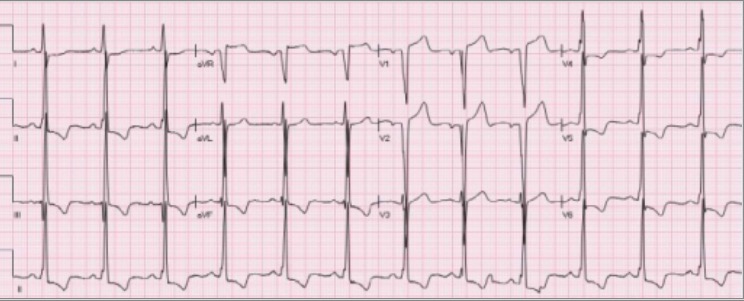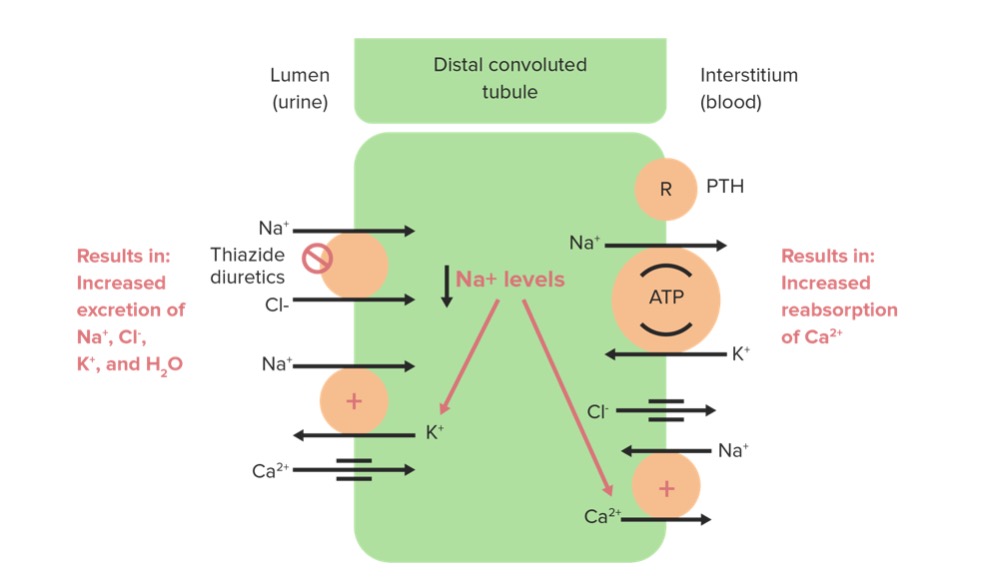Playlist
Show Playlist
Hide Playlist
Hypertension: Definition & Forms
-
Slides 06 VascularMedicine advanced.pdf
-
Reference List Vascular Medicine.pdf
-
Download Lecture Overview
00:01 The definition of hypertension is a chronic increase in blood pressure. 00:07 Recently, there had been randomized controlled trial data that says we had been allowing patients to have too high blood pressures and considering that well controlled. 00:18 So, these days, the recommendation has been to try and get peoples blood pressure under a 120/80. 00:25 This is probably a good idea if you're looking at events down road such as stroke and so forth, but it comes with a risk that when one pushes the blood pressure down this far, first of all, the patients may complain of terrible fatigue and secondly they're maybe syncope, fainting episodes with grave injury. 00:47 So I think one has to be very, very careful about being very aggressive with blood pressure control, I've seen many patient hurt by excessive control of blood pressure. 00:58 So I would say, if you're asked on the exam, what's the ideal blood pressure, the answer is less than 120/80. 01:05 If you're actually taking care of human beings, I think you have to be very careful about pushing the blood pressure too low, and I've seen many, many bad events from excessive blood pressure control with patients fainting, breaking bones, requiring orthopedic procedures and so forth. 01:22 In any case, this is an example of when you answer the test, you do one thing; and when you're actually practicing with real live human beings, you have to do this very gradually and very carefully, this is definitely true with very elderly patients who very prone to syncope with grave consequences. 01:43 Another definition of hypertension, of course, is if the patient has had high blood pressure diagnosed in the past and is currently receiving antihypertensive medications. 01:56 Hypertension results from increased vascular resistance. 01:59 Let's think about that for a moment. Remember the formula for blood pressure is the same as the formula for measuring resistance or voltage in an electrical current. 02:12 The voltage in an electrical current equals the resistance times the flow, in other words, the amps times the resistance. In the cardiovascular system, it's the same, blood pressure equals the flow times the peripheral vascular resistance. 02:27 When peripheral vascular resistance goes up and the flow is maintained constant, blood pressure goes up. 02:35 Approximately one third of Americans have hypertension and often there are serious complications. 02:43 The reason for this is that patients very often do not realize that they have high blood pressure because it's often without symptoms until the patient gets to the point that there's a complication. 02:57 I've just repeated for you so called the Ohm's Law, Ohm's Law is the electrical law of the circulation that is pressure equals current times resistance; or in electricitym E is voltage, I is amperage or flow and R is the resistance; and in the circulation, remember it's the same formula, blood pressure equals cardiac output, which is the flow in the system, times the vascular resistance, and patients with hypertension have elevated vascular resistance. 03:31 There are two forms of hypertension that are recognized by physicians, so called essential hypertension, that's the vast majority of the patients where there's no obvious cause for the hypertension, it's thought to be genetics as well as environment. 03:48 Things like high salt diet and obesity play into this. 03:53 We know families where everybody in the family has a tendency to hypertension and other families where there's no tendency to hypertension so there's clearly genetic factors involved here. 04:04 Secondary hypertension is the result of another factor not genetic. 04:09 It can be the use of abusive drugs such as cocaine or amphetamine, it can be due to kidney disease usually renal vascular, we're gonna talk about, we've already talked about that in the last lecture, we're gonna talk some more about that in this one. 04:23 Pheochromocytoma which is a tumor that releases adrenalin and noradrenalin and coarctation of the aorta, we've talked about that a little bit in the past. 04:32 Many of these secondary causes are effectively treated either by medicine or by surgery. 04:39 Let's take a little bit about coarctation of the aorta as a typical example of a secondary form of hypertension. 04:48 Remember what coarctation is, it's a narrowing of the aorta just like the diagram shows you, just distal to the left subclavian artery. 04:58 This results in hypertension of the blood vessels on the upper part of the body and low blood pressure in the lower part of the body cuz blood doesn't get down there because of the stenosis in the aorta just after the left subclavian artery. 05:14 There's often a pressure difference of 20 mmHg or more between arm and leg, and remember that was one of the test we use also for diagnosing peripheral vascular disease. 05:27 Coarctation is usually picked up in young people before atherosclerosis has developed. 05:32 And again, it requires either surgical repair or a balloon angioplasty often with a stent to reopen the narrow area in the aorta and restore normal blood flow. 05:45 Even after successful therapy, patients who have had a coarctation are at risk to maintain high blood pressure and need medical therapy.
About the Lecture
The lecture Hypertension: Definition & Forms by Joseph Alpert, MD is from the course Arterial Diseases.
Included Quiz Questions
Blood pressure is the result of cardiac output times ..?
- Systemic vascular resistance
- Stroke volume.
- Capillary diffusion capacity.
- Interstitial edema volume.
What are the two forms of hypertension?
- Essential and secondary.
- Initial and subsequent.
- Complicated and essential.
- Primary and rebound.
Customer reviews
5,0 of 5 stars
| 5 Stars |
|
5 |
| 4 Stars |
|
0 |
| 3 Stars |
|
0 |
| 2 Stars |
|
0 |
| 1 Star |
|
0 |





